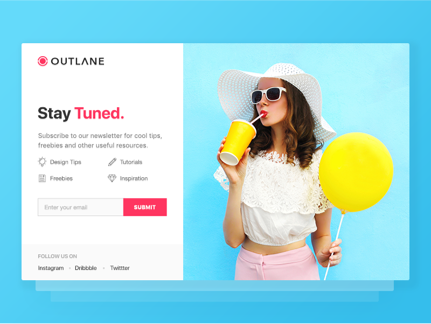The start of every online dialogue in email marketing is the opt-in. The generation of email marketing opt-ins, i.e. the obtaining of addresses, is therefore a key success factor. The more contacts that have agreed to be marketed by email, the greater the leverage in all measures.
The size of the newsletter mailing list is a key success figure in email marketing. Generally, the following applies: The more recipients you can potentially reach, the better. You should also pay attention to the quality when generating email addresses. There are many channels to generate email marketing addresses: Your own website, social media, expos, print publications, Google Ads and ads on social media. We have compiled 6 tips on how to receive addresses in different channels.
1. Understand your users
Why do users register for a newsletter? What do they expect? Ask yourself what your users expect at each point of contact.
- Content relevance: what do users gain from the dialog? For example, special information or cost savings through special offers?
- Content in email marketing is particularly relevant for users if it is individualized in regards to their personal preferences: the right content, at the right time, in the right place.
- Exclusive content can further increase the value proposition and set you apart from other providers. This can be, for example, news in advance or special offers only for newsletter subscribers.
- Newsletters make work easier because they pre-select relevant content for users so that they no longer have to do their own research.
2. Communicate real benefits
Email marketing and newsletters are, in a way, self-explanatory. If you wish to generate opt-ins, you should make the added value palatable to the users. As early as in the registration form or in the link to it, explain what the content of the newsletter is and what users can look forward to.

3. Keep the registration process short
What are the barriers that prevent users from registering for a newsletter? One threshold can be the registration process itself. The longer and more complicated the registration process, the more likely it is that users will drop out. A few clicks or a few seconds can make all the difference.
- Make opt-in forms as simple as possible.
- Only the most necessary data should be requested (the email address and possibly name and title).
- If more data is required, divide the registration into several steps, whereby the basic opt-in should already be obtained after the first step.
- Alternatively – if, for example, further data is required for individualization – the request for additional data can be made later in the dialog process, perhaps as part of the welcome series.
- Also remember to confirm registration by double opt-in mail. The double opt-in mail should be sent immediately after registration and designed in such a way that the confirmation link catches the eye directly.
4. Generate opt-ins legally compliant
To ensure that the consent to email marketing is legally compliant, you must consider a few things. Users must explicitly agree to receive promotional emails, consent should always be given separately and actively, and the required check-mark must not be set automatically so that users have to remove it. Your users must be comprehensively informed about the data processing and their rights of revocation. Describe the content of future newsletters precisely. Specify as precisely as possible the frequency with which you will write to users, e.g. weekly or monthly.
5. Attract the proper addresses
Many users use other email addresses in addition to their main address for specific purposes, for example for competitions. For email marketing, the main address is of the greatest value. So how do you get the “right” email address from users? The fear of data misuse can be removed by making the registration process as transparent as possible. Disposable address providers often use the same domain for most addresses. By comparing new addresses with lists of critical domains, these can be identified and contacted again with a request to change to the correct address. Users should be motivated to enrich their profile with further information about themselves. Those who are willing to disclose such data usually also use their “correct” email address.
6. Use landing pages
It is recommended to set up a landing page for newsletter registration. This can be used as a central point of contact for all other channels – SEO benefits included.
A dedicated landing page also offers much more extensive design options than a small form. These include eye-catching call-to-action (CTA) elements, more flexible customization for testing, and detailed descriptions of the benefits of a newsletter subscription. Notably, landing pages usually do away with generic navigation or other links that distract from registration. Also remember to optimize the landing page for mobile devices.